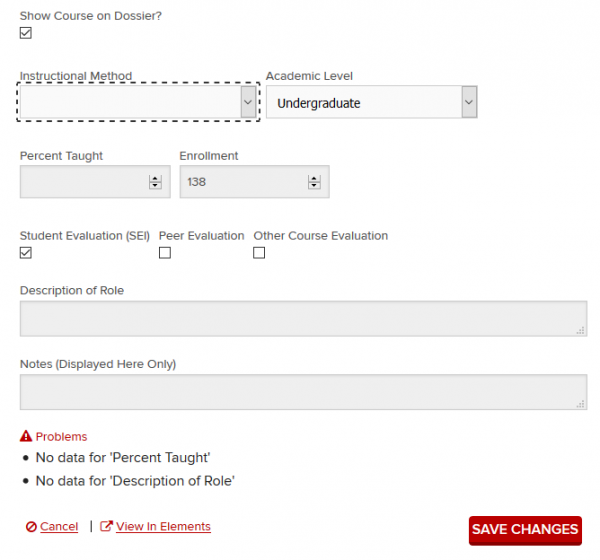"Generate an approved promotion and tenure dossier that aligns to the requirements of the Office of Academic Affairs (OAA). Log in to enter new information, create, download and print your dossier, report on professional activity and more."
"If you wrote it, presented it, or reviewed it, you should be tracking it here....
Ohio State faculty, staff and students can use this service to view, report, and search their accomplishments in teaching, research, and service...
Tip
You have to log into vita.osu.edu and edit your publications. For some reason, publications that VITA finds often have more than one source. In that case, the system doesn’t know which source to use to send to the MSE page and so it sends nothing. So you have to click on the sources tab for each publication and pick one source by clicking on a star. It doesn't matter which one you select."
"The creation of a dossier is required of all candidates seeking promotion and/or tenure. It is also required of tenure-track faculty undergoing fourth year review. The Ohio State University has standardized the dossier creation process with Vita, a program aligned with Elements that permits users to create and store a dossier online.....
Guides for Dossier Creation
There are resources to help you put your dossier together for promotion review. It is strongly recommended that you utilize these guides to help guide you enter data effectively and efficiently.
- University's Instructions for Candidates: The University P&T guidelines for the creation of the core dossier are excerpted and also referenced in the below RIV guides, which are still applicable.
- RIV insider guide : This step-by-step guide walks you through the dossier creation process, developed by Dr. Judy Westman and Jane Pierce, Internal Medicine.
- RIV Tip Sheet: This document is a FAQ for common pitfalls, created by Jane Pierce in Internal Medicine.
In preparation of the promotion dossier it is important that faculty members (and departmental review bodies) appropriately recognize credit for the accomplishments of the faculty. Some activities meet criteria for several aspects of faculty evaluation, and the dossier should reflect those activities in multiple sections. Since the dossiers are reviewed by faculty peers and administrators outside of the department, it is highly likely that those individuals will not appreciate the importance of accomplishments that may seem self-evident to people inside the discipline. It is therefore important that the faculty member and the department put those accomplishments in the appropriate perspective. For example, in some highly specialized areas of research the impact factor of the very best journals may be relatively low. It would be important in that case to include the necessary context for publications in those journals to be properly evaluated.
TIP: Use the narratives to tell your story
The narratives are the only place in the dossier that a candidate can tell his or her story. The data points are important, but they are subject to a wide variability of interpretation if context is not provided. Remember that faculty members from other departments will evaluate the dossier. They will not know what the important achievements are in other disciplines. The candidate must use the narratives to contextualize his or her achievements. A candidate should assume that reviewers have very little prior knowledge, and should therefore write in layman's terms as much as possible....."
For more information,
Visit:
- Office of Distance Learning and eLearning Resource Center | Vita
- Help Articles
- Getting Started with Vita
- Frequently Asked Questions
- Supporting Data
- Known Issues
- Vita Help Request Form
- Ohio State University Extension
- Welcome to VITA Training for Extension Employees PowerPoint Notes [PDF]
- VITA Training Recordings


No comments:
Post a Comment